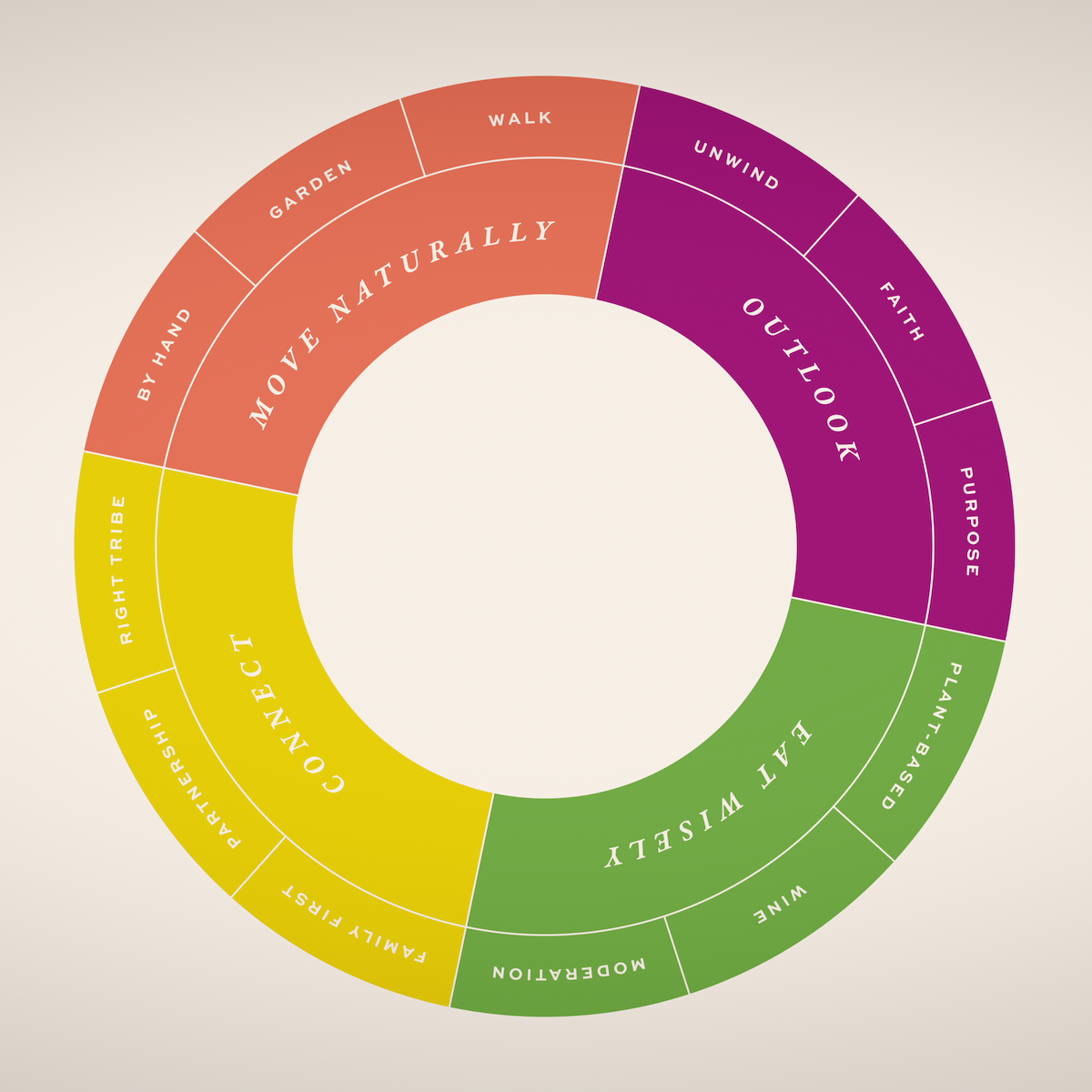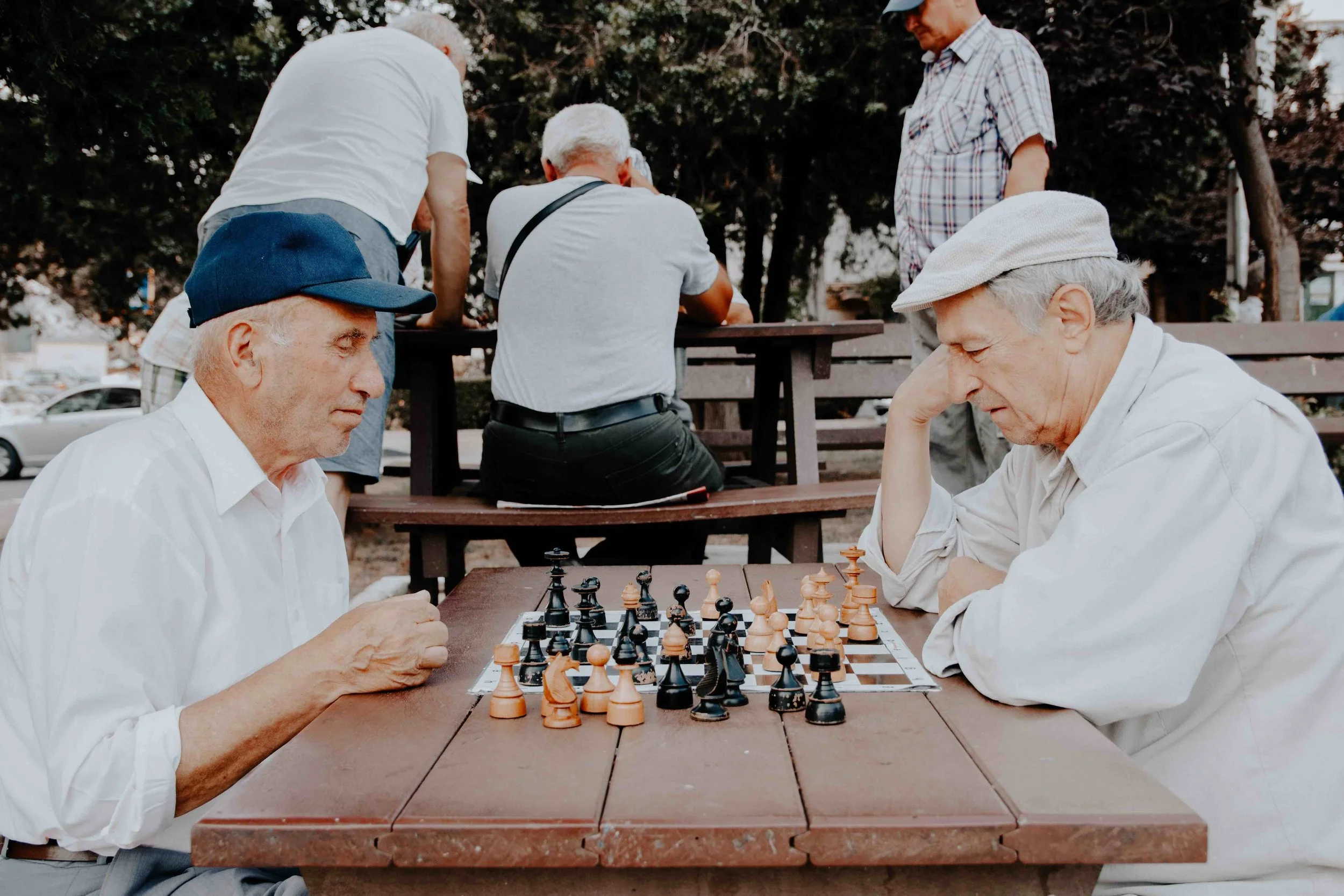Planning for older people - promoting wellbeing and longevity
What shall we watch tonight?"...
It is the perennial question that I am sure gets asked in many, or even most, households around Australia (unless you are one of those disciplined families who have gotten rid of their tv... which was once a claim I could make but sadly it is no longer the case!).
Recently in the regular flick through the various platforms (too. many. platforms... but that's another story for another day!), I came upon the documentary Live to 100: Secrets of the Blue Zones. Being someone who loves health and fitness, mindfulness, and generally would like to live as long as I can... this new release was a fun one to chance upon, one that I thoroughly enjoyed watching, and one that had clear linkages to the work that I do in planning great places for people.
Live to 100: in brief
By way of a quick summary: Buettner’s travels and research have unveiled Okinawa, Japan; Sardinia, Italy; Ikaria, Greece; Nicoya, Costa Rica; and Loma Linda, California, as Blue Zones with the highest rates of living centenarians.
According to Live to 100, these five locations share some similar elements — a plant-based diet, natural movement, and putting family first — that have been linked to longevity and health.
Put together, these elements promote a healthier life - both in terms of daily quality life, and in terms of longevity. (Note: I also took from it that a glass of wine is a good thing - see diagram above. One of the funniest quotes was from an older lady who described wine as her "favourite tea").
“The habits, diets, and lifestyles of blue zone centenarians are simple, but they have the ability to change everything.”
Longevity and Australia
Australia is not one of the countries listed as a 'blue zone', or a place where people routinely live to see 100 years of age. The average life expectancy in Australia at the moment is 81 years for males and 85 years for women, which is 6th country overall in the world (though our Indigenous population do not fare as well as this) (AIHW, 2023).
One of the key concepts in Live to 100 is that it longevity and blue zone living isn't just about living longer; it is about living well for longer. And the aspect of this I want to explore in this piece, is about the role that place plays in longevity and wellbeing, and ageing well.
Place and wellbeing are linked to longevity
While I started watching Live to 100 for my interest in the health side of things and to kick myself up the proverbial backside a little in terms of recalibrating my lifestyle - in watching the miniseries, my mind quickly took me to the clear and obvious links with my work - in that
Place is inextricably linked to longevity, and
A wellbeing mindset is a crucial part of the longevity puzzle.
So, how can we as planners, human geographers, stakeholder engagement experts, and indeed government officials take the learnings from the show, and apply it to how we plan our cities, regions and communities?
Factors to consider in planning for longevity, and wellbeing in older age
Engage, engage, engage with older peopleAnd not just the noisy ones (although they too provide value). But seek out those who are more "hidden". What would make them more comfortable to be out and about? What do they value? What do they need to age gracefully?
Consider how they would like to engage - and this may not always be the newest methods we are using with technology and fact paced workshops. We need to meet people (all people) where they are at to get their valuable insights and inputs that we need to do our jobs well.
Actively consider wellbeingWellbeing is the flavour of the month/year, and rightly so - with the national wellbeing framework Measuring What Matters, and many other state based frameworks in place as well, such as the ACT Government's ACT Wellbeing Framework driving the move towards consideration of social outcomes and holistic lifestyle factors that affect our quality of life.
Through these frameworks, we are guided to think, act on and measure (which is important for driving to an outcome) about the full range of things that impact our wellbeing - and longevity.
The factors considered in these frameworks correlate closely with those things considered in the Live to 100 documentary and include things like: Health, Safety, Belonging, Connectedness, Economic outcomes, Education, Housing and Work-Life Balance.
Utilising wellbeing frameworks in our place-based work is an important piece of the planning for longevity puzzle.
Enable ageing in placeMost elderly people wish to grow old at their own homes, in their existing communities, and doing so has been shown to bring a raft of psychological and physical benefits.
Enabling ageing in place requires a number of factors to be well planned and may include - provision of aged care/residential care in regional areas, provision of aged care close to existing connections, high quality and affordable healthcare, affordable housing types, ease of transport for those who are less mobile, and the right supports being made available.
Create spaces for maintaining social connectionsConnecting with others is a whole quadrant on the diagram above that summarises the themes of longevity. Connection refers to family, partnership and social connections.
Enabling social connections through meeting places, libraries, community gardens, social networks, mens groups, religious organisations and so on in our placemaking efforts is important. Too often elderly people are not comfortable in the public realm and so become absent from the community - a loss for all of us that we should work to avoid if we want a community that values wellbeing and longevity.
Design elements in public spaces may include gathering places with seats, consideration of sun and shade, gardening spaces and outdoor games. In smaller developments, design of front yards, paths and open spaces and how they facilitate meeting and gathering are important considerations.
Provide safety in the public realmOlder people often do not feel safe in public spaces. This may be exacerbated by busy and noisy streets and a fast moving pace, particularly in cities. We need to consider what is needed to create safe spaces for older people to be, and to be well.
This may include design aspects such as well-lit streets, places free of graffiti, promotion of natural view lines and monitoring of crime rates, including community initiatives like Neighbourhood Watch, among other things.
Promote active travel networksMovement is another part of the core four quadrants of longevity. The type of movement that was highlighted was not gym or exercise, but movement throughout the day and a lack of a sedentary lifestyle.
For these reasons, promoting active transport, and ensuring footpaths and walkways are age-friendly is important, alongside the safety in the public realm considerations above.
AgeUK (2015) highlights the need for an integrated approach to the planning and design of road networks, cycle lanes, safe crossings, level pavements, and the location of amenities and services. A practical example here is road crossings also need to be timed to allow enough time for those who move more slowly to cross the road.
In the end, planning for older people benefits us all
We all benefit from the longevity of our wise, older people. The older I get, the more I realise this. There is so much wisdom and experience and joy, and yet we seem to have so little time to glean it, and often, too little inclination.
I write this article hoping that I hope that I too, will be one of those wise, older people... one day. But, according to the Live to 100 diagram, I might need to eat a few more plants, garden more and generally unwind a little on a much more regular basis to do so!
Through our work as planners we have the ability to help create great places that provide the right environment for longevity and wellbeing. Not all the factors in the miniseries were about place, but so many of them were; and the connection of place to wellbeing for longevity and while ageing cannot be understated.
So let's be makers of great places that promote wellbeing and contribute positively to longevity for our older population.
--
Have you watched Live to 100? What did you take away from it? Did you make the same linkages to place or decide to make any changes for your own lifestyle?
Endnote: I've written articles before about considering younger people, women and neurodiverse people in our planning work, and this article adds older people to the list as well. It is so easy for us to be narrow and blinkered by our own preferences and experiences, but in doing so, we are likely missing so much of the picture of who is in our community, and inadvertently creating spaces that do not promote wellbeing for ALL.



